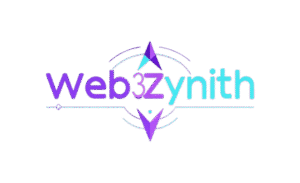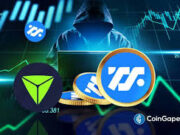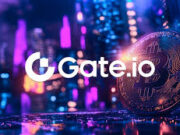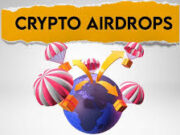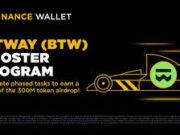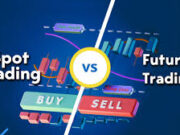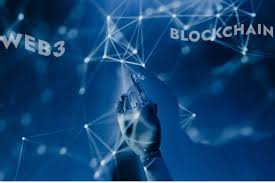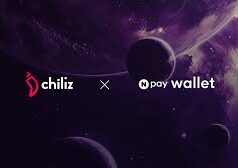In the past decade, Web3 and blockchain technology have transitioned from niche concepts to transformative forces reshaping industries, economies, and societies. By decentralizing trust, enabling new economic models, and empowering individuals, these technologies are redefining how we interact, transact, and govern in the digital age. As of July 1, 2025, with the global blockchain market projected to reach $469 billion by 2030, their impact is undeniable. From finance to art, governance to gaming, Web3 and blockchain are rewriting the rules of the internet and beyond. Here’s a look at how they’ve changed the world and what lies ahead.
1. Decentralizing Finance with DeFi
One of blockchain’s most profound impacts is in finance through Decentralized Finance (DeFi). Unlike traditional banking, which relies on centralized intermediaries like banks and brokers, DeFi uses smart contracts on blockchains like Ethereum to enable peer-to-peer lending, borrowing, and trading. As of June 2025, DeFi protocols have a total value locked (TVL) exceeding $150 billion, with platforms like Aave and Uniswap facilitating billions in daily transactions.DeFi has democratized access to financial services, particularly in underbanked regions. For example, stablecoins like USDC, with a market cap of $44 billion, enable cross-border payments with near-zero fees, bypassing costly remittance services. Farmers in Africa and small businesses in Southeast Asia now use DeFi platforms to access loans without traditional credit checks, leveling the financial playing field. Posts on X highlight how DeFi’s transparency and low costs are “revolutionizing global finance,” empowering individuals over institutions.
2. Revolutionizing Ownership with NFTs
Non-Fungible Tokens (NFTs), powered by blockchain, have transformed how we perceive and trade digital assets. By providing verifiable proof of ownership and authenticity, NFTs have disrupted art, music, gaming, and collectibles. In 2021, the NFT market exploded with sales peaking at $25 billion, and while it cooled, platforms like OpenSea and Blur continue to see billions in monthly volume as of 2025.NFTs have empowered creators by enabling direct sales to fans, cutting out middlemen like galleries or record labels. Artists like Beeple, who sold an NFT for $69 million, and musicians releasing albums as NFTs have redefined creative economies. Beyond art, NFTs are used for tokenized real estate, virtual land in metaverses like Decentraland, and even digital identity verification. Despite volatility, the concept of unique, blockchain-verified assets has cemented a new paradigm of digital ownership.
3. Empowering Communities with DAOs
Decentralized Autonomous Organizations (DAOs) are blockchain-based entities governed by smart contracts and community voting, eliminating traditional hierarchies. By 2025, over 10,000 DAOs manage billions in assets, from investment funds like BitDAO to social clubs like Friends With Benefits. DAOs enable global collaboration, allowing anyone with an internet connection to participate in governance or funding decisions.For instance, UkraineDAO raised $7 million in crypto to support Ukraine during the 2022 conflict, showcasing DAOs’ potential for social impact. Meanwhile, platforms like Aragon and Snapshot have made DAO creation accessible, enabling communities to manage projects transparently. X posts praise DAOs for “giving power back to the people,” though challenges like voter apathy and regulatory uncertainty persist.
4. Enhancing Transparency and Trust
Blockchain’s immutable ledger has revolutionized trust in systems prone to fraud or inefficiency. Supply chain management, for example, has been transformed by platforms like IBM’s Food Trust, which tracks goods from farm to table, reducing food fraud and ensuring ethical sourcing. In 2024, Walmart reported saving millions by using blockchain to streamline its supply chain.Similarly, blockchain enhances transparency in voting systems and charitable donations. Projects like Voatz have piloted blockchain-based voting, ensuring tamper-proof elections, while platforms like The Giving Block track donations in real-time, assuring donors their funds reach intended causes. This transparency has restored trust in institutions and processes, particularly in regions with weak governance.
5. Redefining Digital Identity and Privacy
Web3, the decentralized internet powered by blockchain, shifts control of data from corporations to users. Unlike Web2, where tech giants like Google and Meta monetize user data, Web3 enables self-sovereign identity through decentralized identifiers (DIDs). Platforms like uPort and Civic allow users to manage their data, sharing only what’s necessary for services like KYC or authentication.This shift is critical in an era of data breaches—over 2.6 billion personal records were exposed in 2024 alone. Web3’s privacy-first model empowers users to control their digital footprint, while blockchain’s encryption ensures security. For example, Ink’s Layer 2 blockchain, launched by Kraken, integrates privacy-focused DeFi protocols, reflecting Web3’s commitment to user empowerment.
6. Transforming Gaming and the Metaverse
Web3 has revolutionized gaming by introducing play-to-earn (P2E) models and true asset ownership. Games like Axie Infinity and The Sandbox allow players to earn tokens and own in-game assets as NFTs, creating new income streams. By 2025, the blockchain gaming market is valued at $65 billion, with millions in Southeast Asia and Africa earning livelihoods through P2E.The metaverse, powered by Web3, extends this impact. Virtual worlds like Decentraland and Somnium Space use blockchain to verify land ownership and transactions, creating vibrant digital economies. Companies like Nike and Gucci have launched NFT-based virtual goods, blending physical and digital commerce. X users describe this as “the future of entertainment,” though scalability and energy concerns remain hurdles.
7. Challenges and the Road Ahead
Despite their transformative potential, Web3 and blockchain face challenges. Scalability issues, with Ethereum processing only 15-30 transactions per second compared to Visa’s 24,000, have spurred Layer 2 solutions like Ink and Arbitrum. Energy consumption, particularly for proof-of-work blockchains like Bitcoin, has drawn criticism, though Ethereum’s 2022 shift to proof-of-stake reduced its energy use by 99.9%.Regulatory uncertainty also looms. While the U.S. progresses with stablecoin legislation like the GENIUS Act, global frameworks vary, creating compliance challenges. Additionally, scams and market volatility—evidenced by the 2022 FTX collapse—underscore the need for education and robust security.Looking forward, advancements like zero-knowledge proofs and cross-chain interoperability promise to enhance Web3’s scalability and usability. With 60% of global enterprises exploring blockchain adoption by 2025, per Gartner, and consumer interest surging on X, the technology’s trajectory is upward.
Conclusion
Web3 and blockchain have fundamentally changed the world by decentralizing finance, redefining ownership, empowering communities, and enhancing trust and privacy. From DeFi’s financial inclusion to NFTs’ creative revolution and DAOs’ democratic governance, these technologies are building a more equitable, transparent digital future. As adoption grows and challenges are addressed, Web3 and blockchain will continue to reshape industries and empower individuals globally.Stay updated on Web3 developments by following projects like
@inkfndhq or
@ethereum on X, and explore platforms like inkonchain.com to join the revolution.Disclaimer: This blog post is for informational purposes only and does not constitute financial or investment advice. Always conduct your own research before engaging with cryptocurrencies or blockchain projects.
